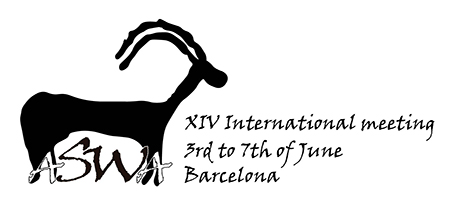In this study, we present the combined results of eruption and dental microwear analyses on the ungulate assemblages recovered from the Final Natufian (level Ib) at Eynan/Mallaha (Israel). Dental wear refers to two methods for reconstructing dietary habits in ungulates. They correspond to two scales of analysis, macroscopic (mesowear) and microscopic (microwear), which are related to different temporal scales. Consequently, each method is giving access to very different periods in the life history. Mesowear is a proxy averaging diet over months while microwear reflect the diet of the last days before death. The first objective is to integrate the results from mesowear and microwear to provide indirect evidence of the dietary habits of the ungulates (fallow deer, roe deer, red deer, mountain gazelle and wild boar) and to reconstruct their habitat(s). The second objective is to use tooth microwear patterns (microscopic features produced by food items on teeth) as a high-resolution proxy for estimating the duration of mortality events and their seasonality, and to compare with the data obtained from tooth eruption and wear patterns. Regarding the dietary habits of the ungulates from Eynan, dental wear classifies the fallow deer, roe deer and gazelle as leaf browsers, red deer as grass-dominated mixed feeder, and wild boar in the mixed-feeding category. There is no overlap in dietary patterns, which suggest significant niche partitioning among the ungulates. These data also support the presence of diverse habitats around the site (both wooded and open areas). The study of the mortality events through zooarchaeology or microwear provides significant information about seasonal resource procurement by the Natufian groups. Microwear analysis also permitted to classify each species of ungulate as resulting from seasonal events. The results are supporting the seasonal hunting of the ungulates. The combined approach will permit to define if these animals were hunted during a single season, or if they could correspond to different seasons over the year. This technique opens new perspectives to investigate seasonal patterns of ungulate accumulations in archaeological sites using non-destructive sampling.
|
|
|
By author > Valla François
Ungulates paleodiet and seasonality in the Final Natufian assemblage from Eynan/Mallaha (Northern Jordan Valley, Israel)
1 : Institut Català de Paleoecologia Humana i Evolució Social (IPHES)
2 : Institució Catalana de Recerca i Estudis Avançats
3 : Area de Prehistoria, Universitat Rovira i Virgili
4 : Institute of Archaeology, National Natural History Collections, the Hebrew University of Jerusalem
5 : Israel Antiquities Authority
6 : ArScAn
CNRS, UMR 7041 ArScAn – Equipe Archéologies environnementales
| Online user: 1 | RSS Feed |

|

 PDF version
PDF version